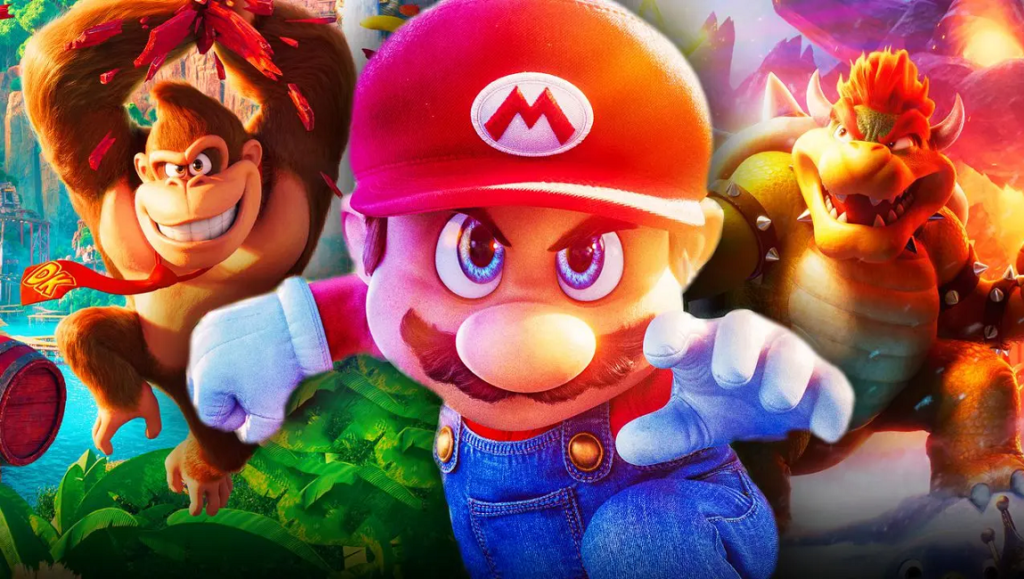It has been 30 years since audiences were treated to a big-screen iteration of the beloved Nintendo video game series Super Mario Bros., with Bob Hoskins and John Leguizamo starring as the titular Brooklyn siblings and plumbers-turned-heroes, Mario and Luigi. That live-action adaptation, however, was at the time universally loathed by critics and audiences alike and ultimately failed to recoup its hefty budget, resulting in Nintendo CEOs’ refusal to license out the property in fear of another gargantuan boondoggle. It was only upon meeting with Chris Meledandri, the head of animation studio Illumination — otherwise known as the house that Despicable Me built — that Nintendo had a change of heart, leading to this week’s release of the fully-animated The Super Mario Bros. Movie.
It was always a curious decision why Disney decided to go the live-action route all those years ago, as the property had generally catered to a younger demographic, and the derring-do involved in the franchise’s action seemed nearly impossible to replicate in the real world — especially when you have a 50-year-old actor playing the bouncy lead character, traversing a fantastical world made up of giant talking turtles and mushrooms. 1993’s version was indeed an undeniable shitshow on its face, but it also had something resembling a point of view and clear personality, elements sorely lacking from 2023’s exercise in brand extension, the definition of art by committee; even to dub the final product “soulless” wouldn’t be quite accurate, as that would imply there were ever aspirations for something greater than nostalgia. Make no mistake, while the candy-colored animation and emphasis on kinetic action sequences suggests that the film is intended for children, it’s really a ploy for those 25- to 55-year-olds who have nothing but fond memories of playing the original series and its various spin-offs, wistful in their longing for a simpler time (even as a good percentage of that demo still spend their current free time… playing video games). The snake is indeed eating its own tale, resulting in a movie that is nothing but callbacks and Easter eggs to the video games themselves, allowing its older viewers to furiously masturbate with one hand while high-fiving their bud with the other, a self-congratulatory chorus of “I know what that is!” filling auditoriums across the country.
It’s predictable, then, that The Super Mario Bros. Movie has only the faintest wisp of a plot. Koopa baddie Bowser (Jack Black) plans to attack the appropriately named Mushroom Kingdom in a last-ditch effort to woo his beloved, Princess Peach (Anya Taylor-Joy). Meanwhile, Mario (Chris Pratt) and Luigi (Charlie Day) have just started their own plumbing business after enduring constant harassment from former boss, Spike (Sebastian Maniscalco), a move which seems both entirely understandable and healthy, but one which causes Mario’s father to call him both a bum and a loser, because animated films are seemingly only a vessel for Daddy Issues these days. It’s while trying to stop a massive line break in the sewers of Brooklyn that the two brothers are sucked through a magical warp pipe and transported to another dimension, one with a giant anthropomorphized turtle monster who desperately wants to make love to a human. They inadvertently get separated on their journey, with Mario winding up in the aforementioned Mushroom Kingdom while Luigi is forced to endure various tortures at the hands of one King Bowser. Mario ultimately teams up with Princess Peach in an effort to save both the kingdom and his little brother, relying on some help from raging narcissist Donkey Kong (Seth Rogen) along the way. And there we are.
So much of the action in The Super Mario Bros. Movie is predicated on the gameplay itself, which certainly makes sense in theory, but is rendered here with all of the subtlety of a barrel-throwing gorilla, consistency be damned. The end result feels as though someone threw the entire series in a Cuisinart and pressed “pulverize.” A car race a la Mario Kart? Yep. Mario’s raccoon suit from part three? You bet. Princess Peach’s floating dress from part two? Yes, it’s all here, but incorporated in the most facile ways possible. The animation is as obvious as the film’s desperation for audience approval, a combination of photorealistic backgrounds and characters with bulbous, over-exaggerated features that stick out like sore thumbs. The voice work is likewise generally uninspired, with Pratt spitting out a “Mamma mia!” every couple of minutes and speaking of his brother with a passionate reverence that brings to mind not a beloved sibling, but a particularly successful Grindr hook-up. Black tries his hardest and predictably fares best, even getting to perform an ‘80s-era pop rock power ballad that recalls some of the lesser works of his own Tenacious D, but even that is presented in a way that feels more Spring Breakers and less music video, which sounds awesome in theory but really just reminds audience members that they could be watching that masterpiece instead of this dung heap.
Props, however, are due for composer Brian Tyler, who takes the various themes of the original games and gives them a wholly appropriate and energized 21st-century spin that captivates more than anything else on screen. Indeed, Tyler succeeds where directors Michael Jelenic and Aaron Horvath completely fail — specifically, in delivering a modern update that feels simultaneously singular and reverent. The only thing this Super Mario Bros. has admiration for are the contents of the audience’s wallets, all in the name of hollow nostalgia-baiting, and while also delivering a message that, to those unfamiliar with the series, basically amounts to: “You will need performance-enhancing drugs to defeat your enemy and get the girl.” On second thought, maybe this really is a movie for our current time. Let’s-a go!
Published as part of InRO Weekly — Volume 1, Issue 14.


Comments are closed.